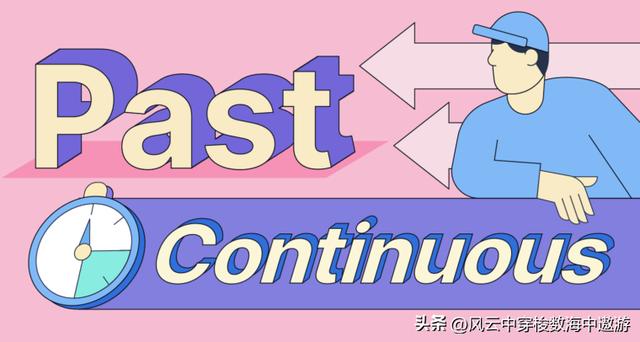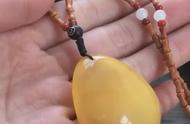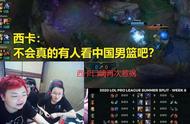何时及怎样用过去进行时

过去进行时用来描述过去正在进行的动作,比如I was writing my research paper all night. 。它使用与现在进行时相同的结构,除了动词to be的过去式。
过去进行时和过去完成进行时甚至一般过去时之间的区别是什么?下面,我们将深入研究过去进行时,回顾所有的规则和用法,并给出大量的过去进行时的例子。
什么是过去进行时?
过去进行时表示从过去开始的连续动作。它是现在进行时的过去式,也用来描述当时进行的动作。现在进行时和过去进行时非常相似,但是过去进行时使用was和were, 这是be的过去时。
过去进行时的公式
过去进行时公式包括to be (was或were)的过去式和动词的现在分词,即-ing形式。
[was/were] [现在分词]
While I was studying, my friends were playing.
Keep in mind that you must conjugate to be to match the subject. Use was for first- or third-person singular subjects, such as I, he, she, or it.
记住,你必须将be和主语匹配。was用于第一人称或第三人称单数主语,如I、he、she或it。
She was working on an email when the fire alarm rang.
The team was playing well until the second half.
were用于所有其他主语,包括所有复数主语和单数第二人称主语you。
You were becoming a great novelist before switching to screenplays.
The days were getting shorter as winter approached.
有些动词不能用于过去进行时
有一类动词不能用于任何进行时,包括过去进行时。这些动词被称为静态动词,也被称为状态动词,或者更恰当地说,是非连续动词。
静态动词不太像动作,而更像状态或感觉。它们描述了持续的心理状态,如意见、需求或意识。一些最常见的静态动词的例子包括:
- believe
- dislike
- hate
- involve
- know
- like
- love
- need
- prefer
- realize
- seem
- understand
- want
因为静态动词本质上是连续的,把它们放在进行时态中听起来很奇怪。避免在过去进行时中使用上述单词,你可以将它们用于一般过去时。
I was understanding math class until we started fractions.
I understood math class until we started fractions.
过去进行时的五种用法
1 过去的一个动作被中断
One of the most common uses of the past continuous tense shows a past action that was interrupted by another past action. These are often complex sentences featuring subordinating conjunctions like when, while, before, after, until, or whenever.
Put the action that was interrupted in the past continuous tense and the action that interrupts it in the simple past.
过去进行时最常见的用法之一是表示过去的一个动作被另一个过去动作打断。这些通常是复杂的句子,具有从属连词,如when, while, before, after, until或whenever。
将被打断的动作用过去进行时,打断前者的动作的用一般过去时。
过去进行时的例子:
Marta was leaving her apartment when she heard the thunderstorm.
They were sleeping peacefully until the alarm rang.
My parents arrived while I was shopping.
2 在特定时间所进行的动作
当你提到过去的某个确切时间时,如果某件事在那个时间之前开始,在那个时间之后继续,则使用过去进行时。如果动作开始于所提到的时间,请使用一般过去时。
过去进行时的例子:
At midnight, everyone at the party was still having fun.
I was working as a cashier in October.
By the age of nine, I was training to be a ninja.
3 过去的习惯动作(通常有类似always类的副词)
用过去进行时来谈论过去经常做但现在不做的动作。这种形式通常与副词和副词短语连用,特别是那些表示动作做了很多次的短语,如下所示:
- all the time
- always
- constantly
- continuously and continually
- forever
- perpetually
- the entire time
你也可以使用频率副词(rarely, seldom, sometimes, occasionally, often, frequently, usually).
过去进行时的例子:
As a baby, my brother was always making a mess.
My first year of college, I was making spelling mistakes all the time.
She was forever trying to impress her crush.
4 强调过去的动作会持续多久
你也可以用过去进行时来强调一个动作花了多长时间,强调做这件事花了多少时间。这种形式通常使用副词短语来解释时间的长度,例如:
- all morning/afternoon/evening
- all day/night
- all week/month/ year
- for hours/days/weeks/months/years
- the whole time
过去进行时的例子:
The players were training all year for this match.
She was gardening all morning and missed the delivery.
I was trying to complete the final level for hours.
5 给故事设置场景
在讲故事(或写故事)时,你可以用过去进行时来“设定场景”,或者准确地描述故事开头发生的事情。我们使用过去进行时是因为这些动作大概在故事开始之前就已经发生了。
过去进行时的例句:
The birds were singing, and the sun was shining. I knew it would be a good day.
Everyone at the cafe was enjoying their coffee. Then the stranger appeared.
The city was going about its business without knowing the aliens had arrived.
过去进行时对比一般过去时
过去进行时经常与一般过去时混淆——这可能是因为有些句子可以用这两者之一。
My hamster was sleeping all day.
My hamster slept all day.
一般过去时通常更常用。然而,有一些细微的差异值得一提。
当你用从句(例如以When开头的从句)连接另一个动作时,请记住以下区别:
•过去进行时表示动作在另一个动作之前开始。
•一般过去时表示一个动作在另一个动作之后开始。
在下面的例子中,使用了过去进行时,说话人在哨声响起之前就开始跑了:
When the whistle blew, I was running.
在这个使用一般过去时的例子中,说话者在哨声响起后开始跑:
When the whistle blew, I ran.
同样地,当你直接提到时间时,过去进行时表示动作在时间之前开始,而一般过去时表示动作在那个时间开始。在这里,说话者在中午之前就开始吃午饭了:
At noon I was eating lunch.
在这里,说话者中午开始吃午饭:
At noon I ate lunch.
过去进行时vs 过去完成时
另一个可能令人困惑的话题是过去进行时和过去完成进行时的区别。这两者都可以显示过去的动作被另一个动作打断。然而,主要的区别是:
•使用过去进行时,动作在中断后继续进行。
使用过去完成进行时,动作在中断后停止。
在这个例子中,使用了过去进行时,主人回来后,猫继续打盹:
The cat was napping when its owner came home.
而在这个使用过去完成进行时的例子中,猫在打盹,但当主人回来时就停了下来:
The cat had been napping when the owner came home.
,







